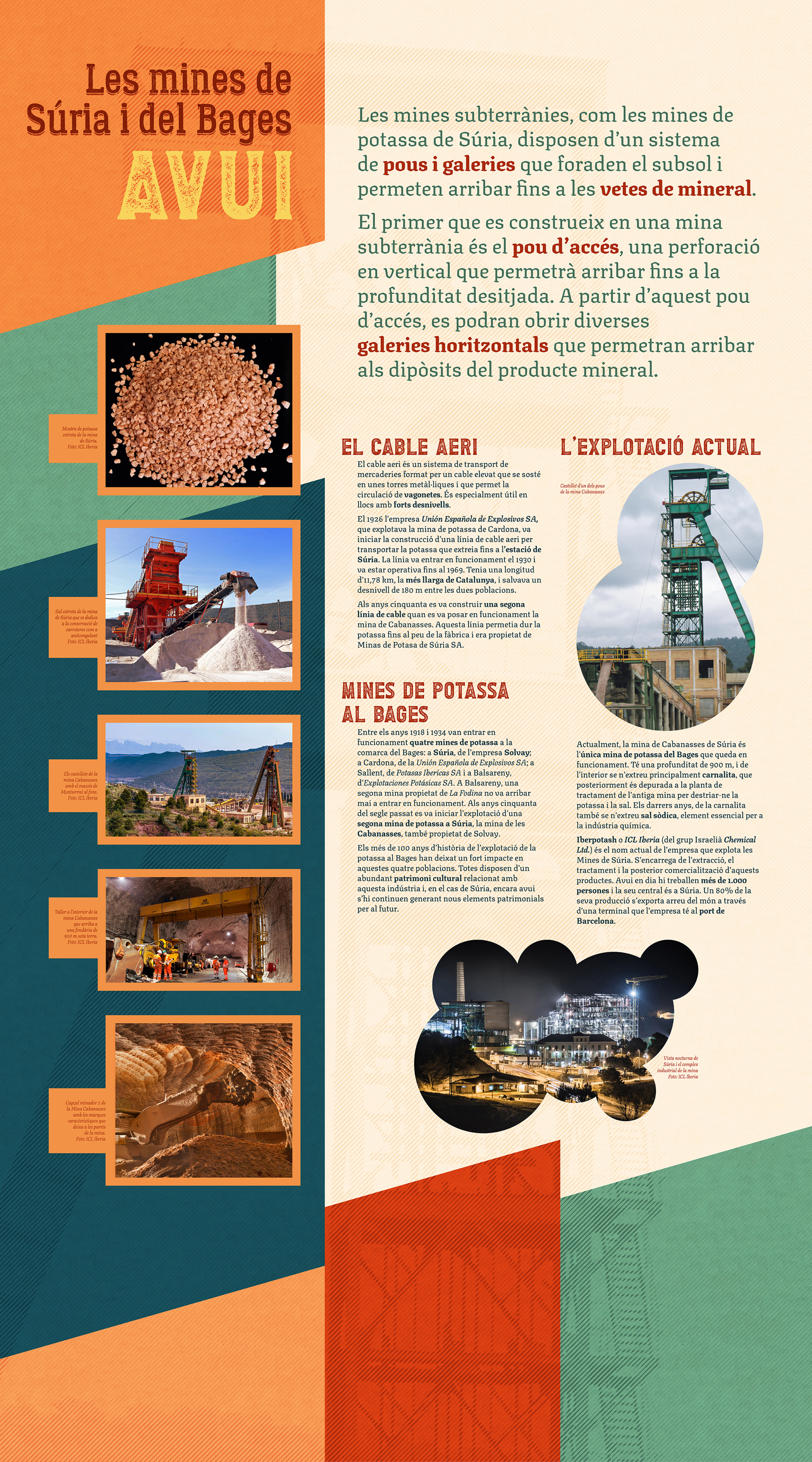10. THE MINES OF SÚRIA AND BAGES’ TODAY
Underground mines, such as the potash mines of Súria, have a system of shafts and galleries that drill into the subsoil and make it possible to reach the ore veins.
The first thing that is built in an underground mine is the access shaft, a vertical drilling that will allow reaching the desired depth. From this access shaft, it will be possible to open several horizontal galleries that will allow to reach the deposits of the mineral product.
THE ROPE WAY
The rope way is a goods transport system made up of a high cable, which is supported on metal towers, and which allows the traffic of wagonnettes. It is especially useful in places with steep slopes.
In 1926, the company Unión Española de Explosivos S.A., which operated the Cardona potash mine, began the construction of an aerial cable line to transport the potash it extracted to the Súria station. The line came into operation in 1930 and was operational until 1969. It had a length of 11.78 kilometres, the longest in Catalonia, and saved a difference of 180 meters between the two towns.
In the fifties, a second cable line was built, when the Cabanasses mine was put into operation. This line allowed potash to be brought to the foot of the factory and was owned by Minas de Potasa de Súria S.A.
THE CURRENT EXPLOITATION
Currently, the Cabanasses de Súria mine is the only Bages potash mine that remains in operation. It has a depth of 900m, and mainly carnalite is extracted from its interior, which is later purified in the old mine's treatment plant to separate potash and salt. In recent years, sodium salt, an essential element for the chemical industry, has also been extracted from carnalite.
Iberpotash or ICL Iberia (of the Israel Chemical Ltd. group) is the current name of the company that runs the Mines of Súria, being in charge of the extraction, treatment and subsequent commercialization of these products. Today, more than 1,000 people work there, and the head office is located in Súria. 80% of its production is exported around the world through a terminal that the company has in the port of Barcelona.
POTASH MINES IN BAGES
Between 1918 and 1934, four potash mines came into operation in the Bages region: in Súria, de la Solvay; in Cardona, from the Unión Española de Explosivos SA; in Sallent, from Potasas Ibéricas SA; and Balsareny, from Explotaciones Potásicas SA. In Balsareny, a second mine owned by La Fodina never came into operation. In the fifties, a second potash mine was put into operation in Súria, the Cabanasses mine, also owned by Solvay.
The more than 100 years of potash exploitation in Bages have left a strong impact on these four towns. All of them have an abundant cultural heritage related to this industry, and in the case of Súria, even today, new heritage elements continue to be generated for the future.


